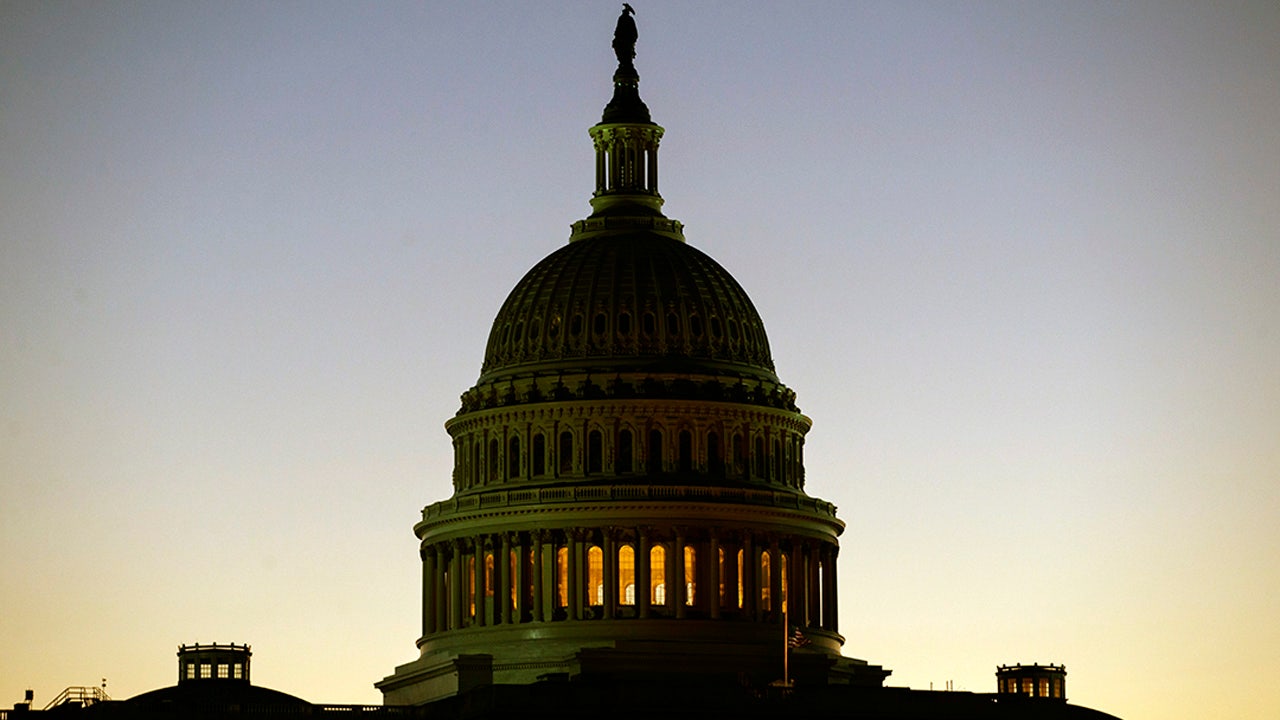By William Janes ( September 23, 2025, 2:12 PM BST) — Five people have been arrested on suspicion of carrying out a €100 million ($118 million) cryptocurrency fraud in a joint international operation by law enforcement agencies across Europe, a European Union law authority said Tuesday….
Crypto
Is cryptocurrency helping Hamas fund terrorism?

The US and Israel have stepped up their efforts to limit cryptocurrency transfers to Hamas since the group’s brutal October 7 attacks on Israel. Bitcoin, Dogecoin and Ethereum are increasingly blamed as conduits of funding for Islamist groups, but to what extent is this justified?
In the wake of Hamas’s attacks on Israeli territory on October 7 that were unprecedented in scale, the role of digital currencies like Bitcoin and Dogecoin and crypto exchange platforms in financing the radical Islamist movement are increasingly under scrutiny.
On October 19, the US Treasury Department’s Financial Crimes Enforcement Network (FinCEN) proposed new regulations identifying “Convertible Virtual Currency Mixing (CVC mixing) as a class of transactions of primary money laundering concern … to combat its use by malicious actors including Hamas [and] Palestinian Islamic Jihad”.
These online services, known more casually as “mixers” or “tumblers”, mix cryptocurrency of illicit origin with other cryptocurrency funds. As such, “the risk of employing crypto mixers to launder money or conceal earnings is pretty considerable”, acknowledges crypto industry news site Cointelegraph.
Appeals for Bitcoin via Facebook, Instagram and Telegram
In the wake of the October 7 assault, the Israeli defence ministry claimed it had seized virtual wallets linked to Hamas that had received $41 million (€39 million) between 2019 and 2023. The Palestinian Islamic Jihad group, for its part, has raised $94 million (€89 million) in cryptocurrency in recent years, according to Elliptic, a British firm that analyses virtual currency transactions.
And that’s not all. Washington also decided on October 18 to sanction “Buy Cash”, a Gaza-based company accused of “facilitating” cryptocurrency transfers to Hamas and Palestinian Islamic Jihad.
“Hamas’s use of crypto first came to light in January 2019,” writes David Carlisle, co-founder of Elliptic, in a blog post published on October 11. The al-Qassam Brigades, Hamas’s armed wing, was caught red-handed while organising a call for Bitcoin donations via Facebook and Instagram.
At first, these “funding 2.0” initiatives only raised a few thousand dollars, but Hamas has increasingly used social networks as funding channels ever since. And the Palestinian group formally listed as a terrorist organisation by the EU and the US is not alone in its actions. “Using crypto in conjunction with social media platforms – Facebook, Instagram, and I’ve seen Telegram mentioned recently – has become quite popular,” says Nicholas Ryder, a professor of law and specialist in terrorist financing networks at Cardiff University.
The recent attention paid to funds transferred to Hamas in Bitcoin and other cryptocurrencies may give the impression that without this windfall, the Islamist movement would be bankrupt or would, at least, have had a much harder time financing its attacks on Israel.
Secondary means
“There is a degree of hyperbole about this topic. It’s relatively new, has cachet and is unknown by many people, so of course it attracts attention. You cannot ignore it, but if you think about the pros and cons of [using it for] raising or moving funds, crypto is not the best,” says Tom Keatinge, director of the Centre for Financial Crime Research and Security Studies at the Royal United Service Institute, one of the UK’s leading think tanks on security issues.
For example, Hamas, which Forbes magazine ranked in 2014 as “one of the richest terrorist groups in the world”, has an estimated annual budget of nearly $1 billion. Most of the money comes from “expatriates or private donors in the Gulf region”, points out German news channel Deutsche Welle.
In this respect, the $41 million in cryptocurrencies seized by the Israeli authorities may seem like a drop in the bucket for Hamas. What’s more, these amounts should be taken with a grain of salt: it can be very difficult to separate funds intended to finance terrorist activities from others in a virtual wallet, Chainalysis, an American blockchain analysis company, notes in a blog post.
“[It’s] impossible to quantify how much money is transferred via crypto, but it has become a more and more prominent funding method,” says Ryder.
The rise of Bitcoin, Ethereum and Dogecoin in the world of terrorism can be explained first and foremost by the simplicity of making a transaction, notes Keatinge: “It’s easy, and I can make a donation from my couch at home.” It’s also much quicker than having to open a bank account and find intermediaries willing to transfer the fund. “You just need a smartphone and/or a laptop,” adds Ryder.
International authorities are also putting more effort into countering traditional terrorist financing channels, so these groups are trying to compensate with new ways of raising money. “The more we put pressure on traditional ways of financing, the more they’ll find alternative ways like crypto. And we are becoming better at fighting against the traditional means of financing. It’s like a balloon: when you squeeze one part, the other gets bigger,” says Keatinge.
Not so anonymous
Hamas, al Qaeda and Hezbollah don’t hesitate to combine the best of both worlds, either. For example, there can now be a cryptocurrency dimension to the use of fake NGOs, a classic means of funding for terrorist groups. “They can cut the top 10 to 15 percent and convert it into crypto, and then transfer it in order to make it more difficult to trace,” explains Ryder.
However, these movements’ interest in such new funding methods is not as strong as current media noise might suggest, because they are not ultimately as anonymous as we’ve been led to believe. “It may seem as though crypto is some kind of secret way to channel funds, but it has vulnerability. As soon as you start blockchain transactions, they are traceable. They’re not as secretive as many people think,” says Keatinge.
Indeed, all Bitcoin transactions pass through the blockchain, which is the digital equivalent of a ledger that is accessible to all. Admittedly, the names of those transferring or receiving the funds do not appear, but it is possible to track every movement of funds, and companies such as Chainalysis and Elliptic have become masters in the art of tracing their origin.
Of course, there are ways of making these transactions more anonymous, but they come at the expense of ease and speed – the main advantages of the use of cryptocurrencies for terrorists and other criminals. In the end, it’s still easier and more anonymous to hand-deliver suitcases full of cash.
This article is a translation of the original in French.

Crypto
Ripple Highlights Transatlantic Initiative as Blueprint for Global Crypto Regulation

Crypto
Texas brothers charged in cryptocurrency kidnapping, robbery in MN

GRANT, Minn. (FOX 9) – A Washington County family was reportedly kidnapped and held hostage at gunpoint for hours by two Texas brothers who ultimately took more than $72,000 in cryptocurrency.
Raymond Christian Garcia, 23, and Isiah Angelo Garcia, 24, were each charged via warrant with three counts of kidnapping, three counts of first-degree burglary, and one count of first-degree aggravated robbery for their alleged roles.
The incident led to the Washington County Sheriff’s Office issued a shelter in place order while they searched for the suspects. The incident ultimately led to the cancellation of a high school homecoming football game in Mahtomedi.
Home invasion and cryptocurrency theft
The backstory:
According to the criminal complaint, a 911 call was received at approximately 4:45 p.m. on Sept. 19 from someone in Grant, Minnesota, stating that he and his family had been kidnapped and were being held hostage at gunpoint in their home.
The complaint details that on Sept. 19, a man was taking out the garbage at around 7:45 a.m. when the armed brothers allegedly forced him back into the garage and bound his hands with zip ties. The men then woke up the two other people in the house, also binding them.
Raymond Garcia is accused of holding the 911 caller and his mother hostage for nine hours while armed with an AR-15-style rifle. Police said the upstairs bedroom door was tied shut with wire and needed to be cut in order to free them, according to the complaint.
Meanwhile, Isiah Garcia, armed with a shotgun, allegedly forced the man to log into his cryptocurrency wallet and transfer over $36,000 to an unknown account, charges state. After learning of a separate crypto wallet kept at the family cabin in Jacobson, Minnesota, Isiah Garcia allegedly forced the man to drive three hours and transfer the additional cryptocurrency, valued at over $36,000.
According to the complaint, the victim believed some of his crypto account information had been leaked during a data breach. The charges note that the men were frequently on the phone with an “unknown third party who directed [them] to transfer the cryptocurrency.”
The victim inside the house called 911, and multiple squad cars passed Isiah Garcia as they were driving back from the cabin. Isiah Garcia then turned the truck around, parked, and fled on foot before discarding the shotgun in a nearby field, charges allege.
Raymond Garcia was seen on camera running out the back door of the home. During a search of the area, authorities recovered an AR-15 rifle in a suitcase located in the tree line behind the home, charges said.
Brothers arrested in Texas
The investigation:
According to the complaint, Isiah Garcia rented a car near Houston, Texas, on Sept. 16 and drove to Minnesota. The vehicle’s GPS data placed the car near the victim’s home and a motel in Roseville. On Sept. 21, Isiah Garcia was taken into custody while driving the same rental car in Texas.
Raymond Garcia went to authorities on Sept. 22 to report that his AR-15 had been stolen in Waller, Texas. During a search of the brother’s home in the Waller area, authorities reportedly found a firearm box with a serial number matching the AR-15 recovered in Minnesota.
At the time the criminal complaints were filed, both men were in custody in Texas.
The Source: This story uses previous FOX 9 reporting and information from a Washington County criminal complaint.
Crypto
EU Enforcers Arrest 5 Over €100M Cryptocurrency Scam – Law360

Law360 is on it, so you are, too.
A Law360 subscription puts you at the center of fast-moving legal issues, trends and developments so you can act with speed and confidence. Over 200 articles are published daily across more than 60 topics, industries, practice areas and jurisdictions.
A Law360 subscription includes features such as
- Daily newsletters
- Expert analysis
- Mobile app
- Advanced search
- Judge information
- Real-time alerts
- 450K+ searchable archived articles
And more!
Experience Law360 today with a free 7-day trial.
-

 Finance1 week ago
Finance1 week agoReimagining Finance: Derek Kudsee on Coda’s AI-Powered Future
-

 World7 days ago
World7 days agoSyria’s new president takes center stage at UNGA as concerns linger over terrorist past
-
North Dakota1 week ago
Board approves Brent Sanford as new ‘commissioner’ of North Dakota University System
-

 Technology7 days ago
Technology7 days agoThese earbuds include a tiny wired microphone you can hold
-

 Culture6 days ago
Culture6 days agoTest Your Memory of These Classic Books for Young Readers
-

 Crypto6 days ago
Crypto6 days agoTexas brothers charged in cryptocurrency kidnapping, robbery in MN
-

 Crypto1 week ago
Crypto1 week agoEU Enforcers Arrest 5 Over €100M Cryptocurrency Scam – Law360
-

 Rhode Island1 week ago
Rhode Island1 week agoThe Ocean State’s Bond With Robert Redford

















